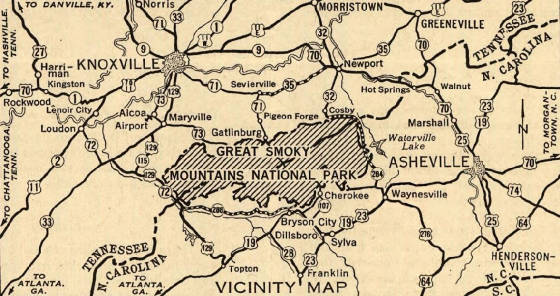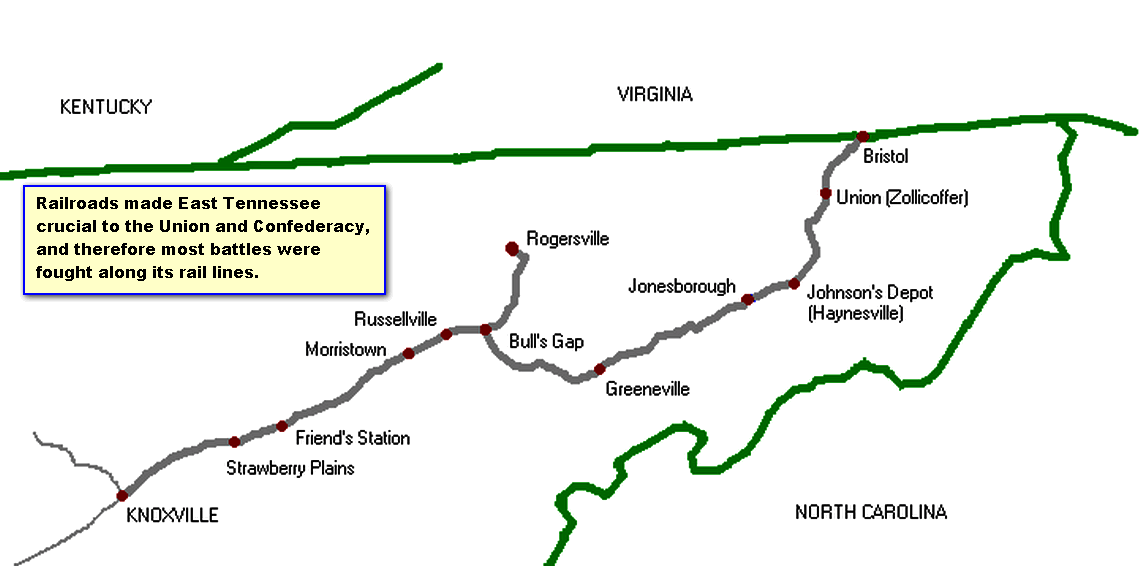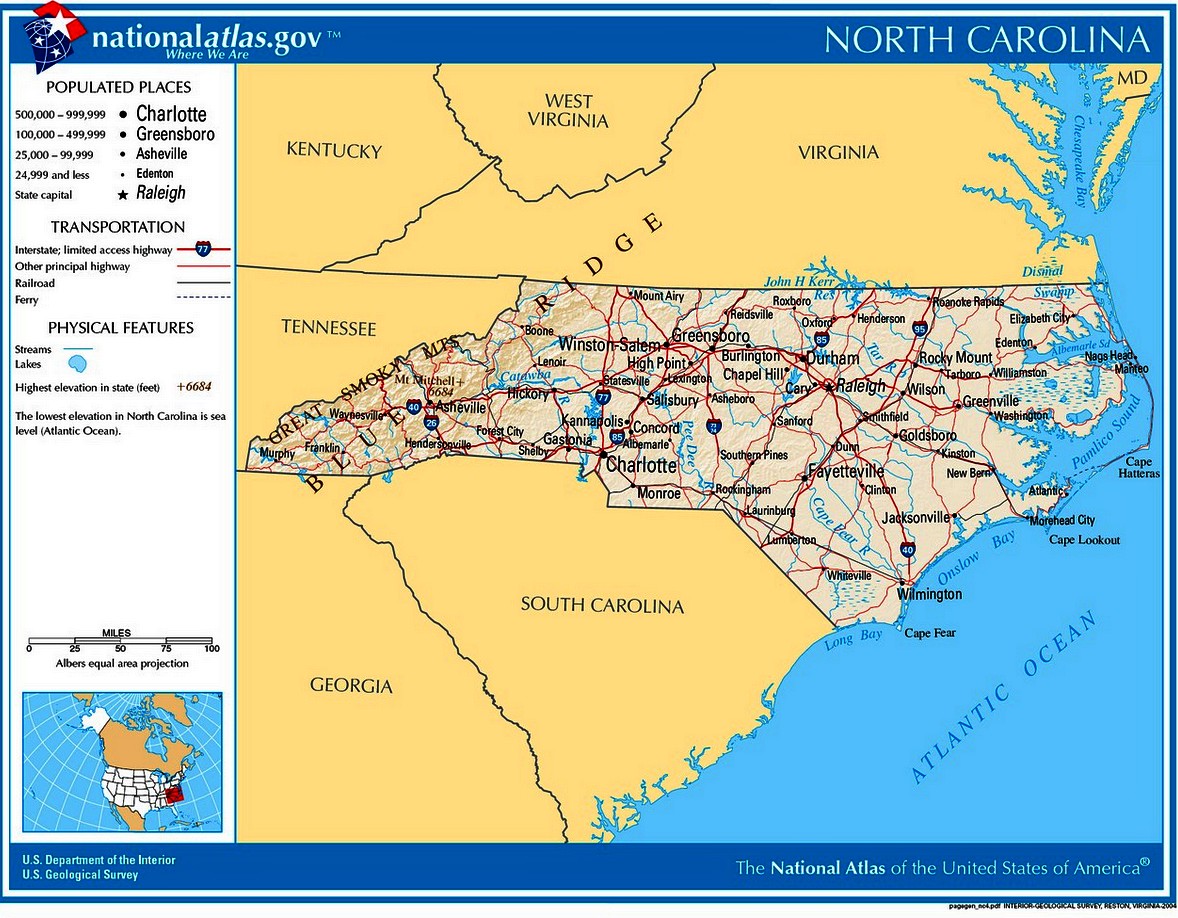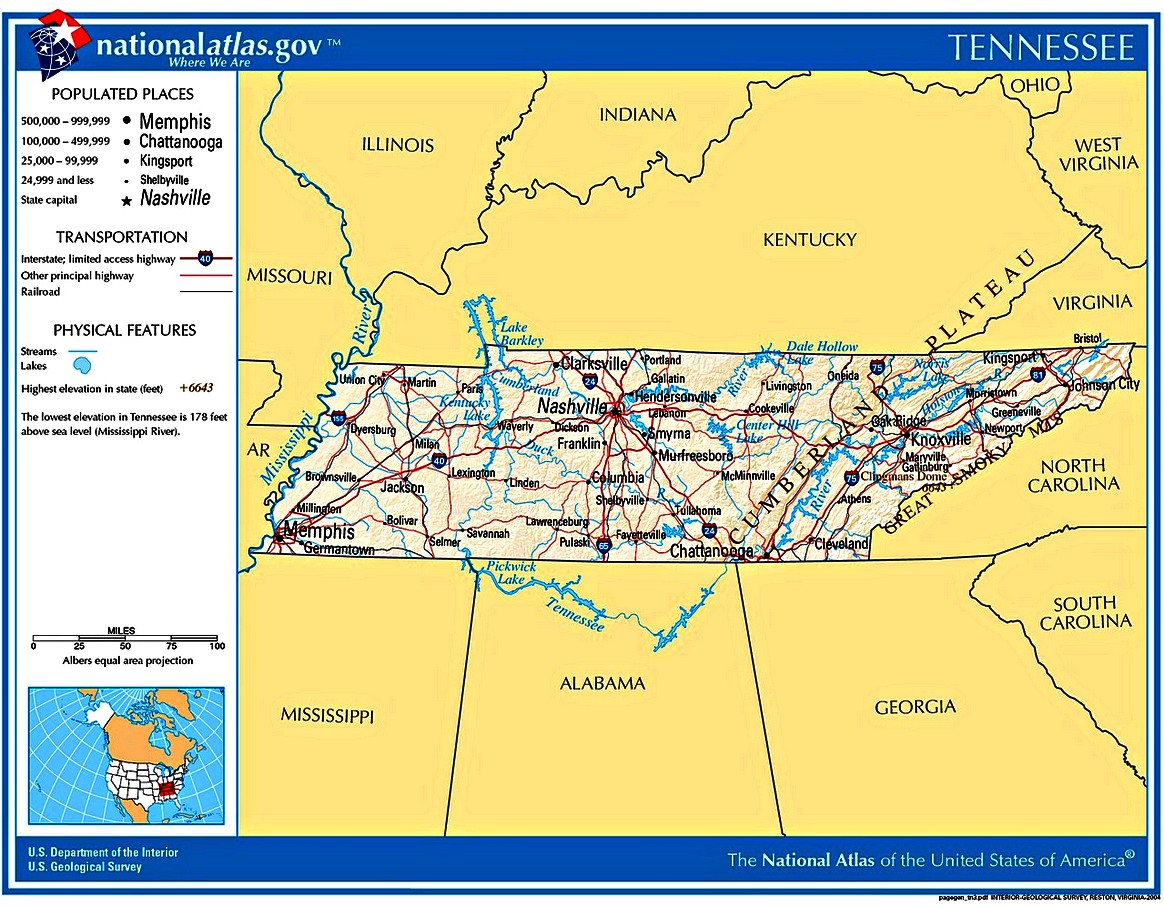|
Official Records of the Union and Confederate Armies
| Great Smoky Mountain National Park |

|
| (Great Smoky Mountains and Vicinity) |
Page 438
No. 55.
Reports of Colonel William J. Palmer, Fifteenth Pennsylvania Cavalry.
HEADQUARTERS ANDERSON CAVALRY,
Trotter's Bridge, December 11, 1863.
GENERAL: I have the honor to report that on yesterday morning a little after daybreak I reached Gatlinburg, 15 miles from
Sevierville, on the Smoky Mountain road, with 150 men, having approached from a point on the same road 3 miles in the rear
of Gatlinburg, which point I reached by a circuitous and almost impassable trail from Wear's Cove.
AT the same time Lieutenant Colonel C. B. Lamborn, with about 50 men, reached Gatlinburg from the north by the Sevierville
road, which he intersected at Trotter's Bridge, 7 miles north of Gatlinburg, by a road leading from Wear's Cove, where our
forces divided.
Page 439
Captain H. McAllester, with the remainder of our force, consisting chiefly of men whose horses were unshod or unfit to
travel over the rough mountain trails, had been sent the previous afternoon to Sevierville from Chandler's, 18 miles from
Knoxville, where I turned off to go to Wear's Cove. His instructions were to pickets the roads out of Sevierville, preventing
any one from leaving the place, in order that information of our movements might not reach the enemy.
Lieutenant-Colonel Lamborn and myself reached Gatlinburg from opposite directions at about the same moment, both finding
pickets posted, who immediately fired, thereby alarming the enemy's camp, which we found situated on a steep wooded ridge,
commanding both roads and intercepting communication between us.
It being impossible to make a dash upon them, we were obliged to dismount our men and deploy them skirmishers. We drove
them from their position, which was a strong one, in about an hour, but, unfortunately, the steep wooded ridge on which they
had their camp jutted on to the mountain on the east, and it was impracticable to prevent the rebels on retreating from taking
up this mountain where we could not reach them, and where they continued firing from behind the thick cover for several hours.
They finally retreated, scattering over the ridges to the Great Smoky Mountain[s].
| Map of Tennessee Civil War Railroads |

|
| (Map) Railroads made East Tennessee an Important Battlefield during the Civil War |
From all the information I could get, I estimate their force at about 200,
of which 150 were Indians and the remainder white men, the whole under the command of Colonel Thomas, an old Indian agent.
We captured their camp with 1 prisoner, 16 horses, 18 muskets, 2 boxes of
ammunition, several bushels of salt, meal, dried fruit, &c., and a large quantity of blankets, old clothing, &c. A
number of squaws had reached them the previous evening, and they had evidently intended remaining at Gatlinburg for the winter,
as their declarations to the citizens in the vicinity proved.
We destroyed the log huts and frame buildings composing their camp, and have
returned most of the horses to their loyal owners. Colonel Thomas was evidently taken by surprise, as he had not time to get
his hat from his quarters at the foot of the ridge, which one of our men captured.
I regret to report that two of my officers and a sergeant were wounded in
the skirmish, Captain Clark seriously in the knee. Captain Betts received a painful flesh wound in the arm. The sergeant's
wound was trivial. The loss of the enemy is not known. If any were killed they carried them off when they retreated.
Colonel Thomas has most probably taken his men back to Quallatown, in North
Carolina, but I have sent a scouting party out this morning to ascertain.
I very much regret that we were not more successful. We rode all night over
a foot path that many of the citizens considered impracticable; and while I cannot see that we could have done better under
the circumstances than we did, yet I can now see from my knowledge of the ground (which was entirely unknown to us before)
how I might have captured most of the party by making certain dispositions before reaching Gatlinburg.
I start this morning for Evan's Ford, on French Broad, 9 miles from Sevierville,
and between that place and Dandridge, where I learn 100 rebel cavalry crossed last night.
I am, general, yours, respectfully,
WM. J. PALMER,
Colonel.
| North Carolina Civil War Map of Battlefields |

|
| High Resolution Map of New Carolina |
Page 440
HEADQUARTERS ANDERSON CAVALRY,
Dandridge, December 13, 1863-6 p.m.
GENERAL: I have just received the order to move with my command to Morristown
to protect a telegraph party sent out from Strawberry Plains.
My pickets were attacked at 10 o'clock this morning by a small scouting party
of the enemy sent out (as prisoners assert) from Bull's Gap. I happened to be near the picket post at the time and immediately
pursued them with the reserve, on the Bull's Gap road, and succeeded in capturing 6 of them belonging to the---Arkansas cavalry,
after a chase of 6 miles. We got their horses, arms, and saddles. I send the 6 prisoners to you herewith, together with 1
other belonging to Wheeler's cavalry, whom we captured in a recent skirmish with a battalion of Indians, under Colonel Thomas,
at Gatlinburg. Also a rebel soldier named Hightower, belonging to Buckner's command, reported to me since writing the last
sentence.
I have sent three companies under Lieutenant Mather at once to Mossy Creek,
which they will reach before midnight, and will start with the balance of my command at about daybreak on the direct road
to Morristown. I hope, however, it will not be necessary to remain very long at Morristown as I am better able to watch operations
of the enemy by being farther to the east. I have sent scouting parties out to Newport and the mouth of Chucky, who will report
by morning.
I am, general, very respectfully,
WM. J. PALMER,
Colonel.
Brigadier-General SPEARS,
Commanding U. S. Forces at Strawberry Plains.
| High Resolution Map of Tennessee Civil War Battles |

|
| High Resolution Map of Tennessee Civil War Battlefields |
HEADQUARTERS ANDERSON CAVALRY,
Dandridge, December 13, 1863-8 p.m. (Received 15th.)
GENERAL: From interrogation of the prisoners I send you, who left their camp
at about 4 p.m. yesterday, 12th instant, at 5 miles this side of Bull's Gap, I feel satisfied that Armstrong's division of
rebel cavalry is encamped at that point (5 miles this side of Bull's Gap), and that the other division, formerly Martin's,
now Morgan's, of Alabama, was encamped not far from Armstrong's, toward Rogersville.
The prisoners belong to a party who were sent out on a scout. They say their
instructions were to find out whether or not there were any Federals in this direction, and that they think the expectation
of their cavalry was to come down this way and attempt to join Bragg either this side or the other of Great Smoky Mountain.
Martin now commands all their cavalry, which they say consists only of Armstrong's
and Morgan's divisions, and of Jones' command from Virginia.
The point referred to is 23 miles from here.
I am, general, yours, respectfully,
WM. J. PALMER,
Colonel, Commanding.
Brigadier-General SPEARS,
Commanding U. S. Forces, Strawberry Plains.
Source: Official Records of the Union and Confederate Armies, Series 1, Volume 31, part 1, pp. 438-440
Recommended
Reading: Brandy Station, Virginia, June 9, 1863: The Largest
Cavalry Battle of the Civil War (Hardcover).
Description: The winter of 1862-1863 found Robert Lee’s Army of Northern Virginia and Ambrose Burnside’s Army
of the Potomac at a standoff along the Rappahannock River
in Virginia. In December 1862, outnumbered Confederate forces
had dealt the Union army a handy defeat in the Battle of Fredericksburg. A demoralized Union army was waiting for spring and
revitalization. The latter came in late January 1863 in the form of Major General Joseph "Fighting Joe" Hooker. Relieving
the disgraced and outmatched Burnside, Hooker reorganized his troops, establishing regular drills, procuring adequate rations
and instituting company colors, thereby giving his soldiers back their fighting spirit. Lee, also with his eye on the spring
campaign, concentrated on maintaining his strength and fortifications while struggling with the ever-increasing problem of
adequate supplies. Continued below…
As the spring
campaign--and Hooker’s new fighting approach--began, cavalry units from both sides took on an increased importance.
This culminated in the largest cavalry battle of the war, fought near Brandy Station, Virginia on June 9, 1863. Compiled from various contemporary
sources, this volume details the contributions of cavalry units during the spring campaign of 1863. Although the work discusses
early encounters such as the Battle of Chancellorsville, the main focus is the Battle of Brandy Station, which marked the
opening of the Gettysburg campaign and Lee’s last offensive
into the North. Here, forces commanded by J.E.B. Stuart and Alfred Pleasanton fought a battle which ranged over 70 square
miles but left no decisive victor. At the end of the day, Confederate troops were still in possession of the territory and
counted fewer casualties, yet Union forces had definitely taken the offensive. While historians still debate the significance
of the battle, many now view it as a harbinger of change, signifying the beginning of dominance of Union horse soldiers and
the corresponding decline of Stuart’s Confederate command. Appendices contain information on individual units with recorded
casualties and a list of West Pointers who took part in the battle. Photographs and an index are also included.
Advance to:
Recommended
Reading: Mountain Rebels: East Tennessee Confederates and the Civil
War, 1860-1870 (240 pages) (University of Tennessee Press). Description:
In this fine study, Groce points out that the Confederates in East Tennessee suffered more for the ‘Southern Cause’
than did most other southerners. From the first rumblings of secession to the redemption of Tennessee
in 1870, Groce introduces his readers to numerous men and women from this region who gave their all for Southern
Independence. Continued below...
He also points out that East Tennesseans were divided in their loyalties and that slavery played only a small role. Groce goes
to great lengths to expose the vile treatment of the Region’s defeated Confederates during the Reconstruction. Numerous
maps, pictures, and tables underscore the research.
Recommended Reading: East Tennessee and the Civil War (Hardcover: 588 pages). Description: A solid social, political, and military
history, this work gives light to the rise of the pro-Union and pro-Confederacy factions. It explores the political developments
and recounts in fine detail the military maneuvering and conflicts that occurred. Beginning with a history of the state's
first settlers, the author lays a strong foundation for understanding the values and beliefs of East Tennesseans. Continued below...
He examines the rise of abolition and secession, and then advances into the Civil War. Early in the conflict, Union sympathizers burned a number of railroad bridges, resulting
in occupation by Confederate troops and abuses upon the Unionists and their families. The author also documents in detail
the ‘siege and relief’ of Knoxville. Although authored by a Unionist, the work is objective in
nature and fair in its treatment of the South and the Confederate cause, and, complete with a comprehensive index, this work
should be in every Civil War library.
Recommended Viewing: The Civil War - A Film by Ken Burns. Review: The
Civil War - A Film by Ken Burns is the most successful public-television miniseries in American history. The 11-hour Civil War didn't just captivate a nation,
reteaching to us our history in narrative terms; it actually also invented a new film language taken from its creator. When
people describe documentaries using the "Ken Burns approach," its style is understood: voice-over narrators reading letters
and documents dramatically and stating the writer's name at their conclusion, fresh live footage of places juxtaposed with
still images (photographs, paintings, maps, prints), anecdotal interviews, and romantic musical scores taken from the era
he depicts. Continued below...
The Civil War uses all of these devices to evoke atmosphere and resurrect an event that many knew
only from stale history books. While Burns is a historian, a researcher, and a documentarian, he's above all a gifted storyteller,
and it's his narrative powers that give this chronicle its beauty, overwhelming emotion, and devastating horror. Using the
words of old letters, eloquently read by a variety of celebrities, the stories of historians like Shelby Foote and rare, stained
photos, Burns allows us not only to relearn and finally understand our history, but also to feel and experience it. "Hailed
as a film masterpiece and landmark in historical storytelling." "[S]hould be a requirement for every
student."
Recommended Reading: The
History Buff's Guide to the Civil War (400 pages). Description:
Exploring the Civil War can be fascinating, but with so many battles, leaders, issues, and more than 50,000 books on these
subjects, the task can also be overwhelming. Was Gettysburg the most important battle? Were Abraham Lincoln and Jefferson
Davis so different from each other? How accurate is re-enacting? Who were the worst commanding generals? Thomas R. Flagel
uses annotated lists organized under more than thirty headings to see through the powder smoke and straighten Sherman’s
neckties, ranking and clarifying the best, the worst, the largest, and the most lethal aspects of the conflict. Continued
below...
Major sections are fashioned around the following topics:
• Antebellum: Investigates the critical years before the war, in particular
the growing crises, extremists, and slavery.
• Politics: Contrasts the respective presidents and constitutions
of the Union and Confederacy, the most prominent politicians, and the most volatile issues of the times.
• Military Life: Offers insights into the world of the common soldiers,
how they fought, what they ate, how they were organized, what they saw, how they lived, and how they died.
• The Home Front: Looks at the fastest growing field in Civil War
research, including immigration, societal changes, hardships and shortages, dissent, and violence far from the firing lines.
• In Retrospect: Ranks the heroes and heroines, greatest victories
and failures, firsts and worsts.
• Pursuing the War: Summarizes Civil War study today, including films,
battlefield sites, books, genealogy, re-enactments, restoration, preservation, and other ventures.
From the antebellum years to Appomattox and beyond, The History Buff’s
Guide to the Civil War is a quick and compelling guide to one of the most complex and critical eras in American history.
Try the Search Engine for Related
Studies: Official Records of the Union and Confederate Armies East Tennessee Battles American Civil War Reports of Colonel William J. Palmer 15th
Pennsylvania Cavalry Gatlinburg Great Smoky Mountains Civil War
|

